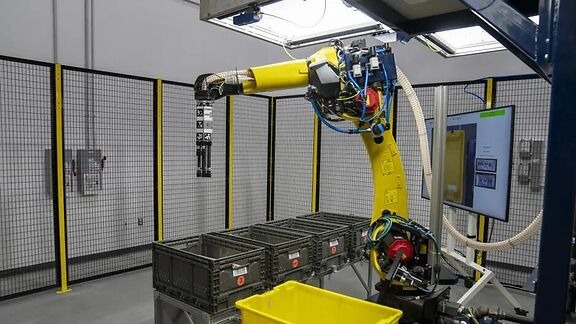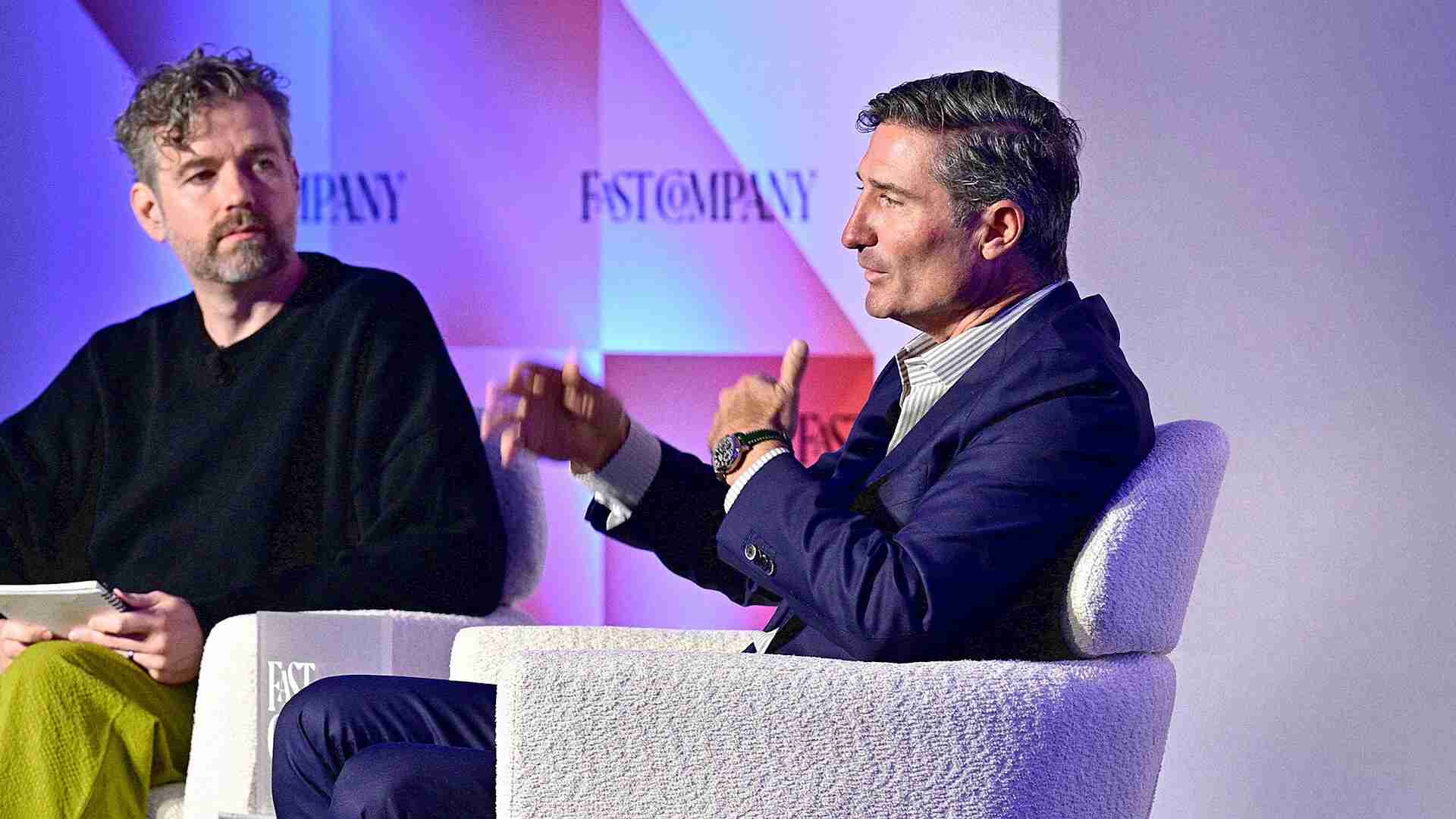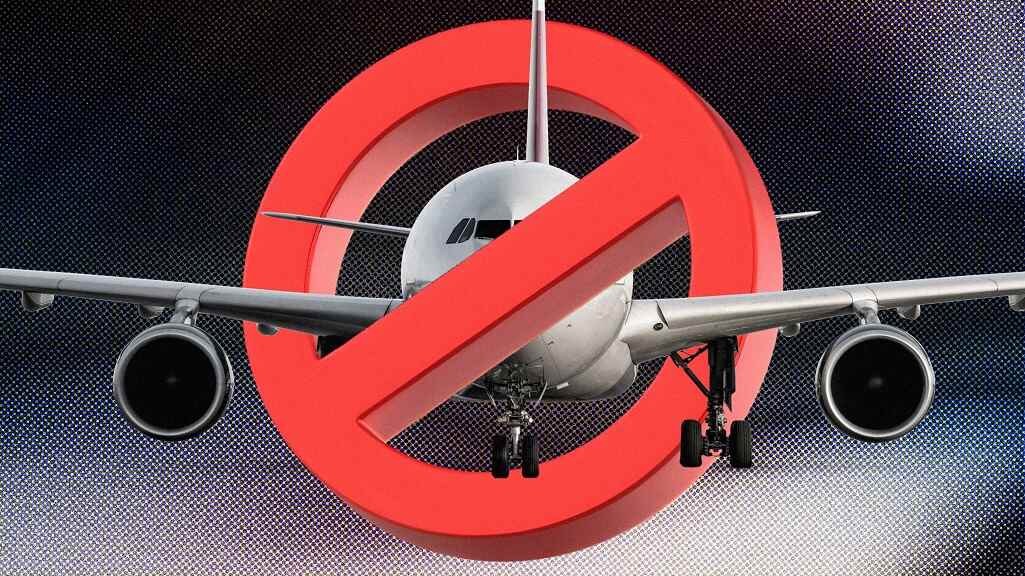- | 9:00 am
Here’s how Amazon plans to automate its warehouses in the future
Its AI-powered robot, called Sparrow, is set to streamline the picking and packing process, according to the man most involved in its creation.

Never one to shy away from automation, Amazon has a new robot that it says will make handling the 13 million packages the company processes every day a much easier process. Whether that comes at the expense of human jobs—or improves their safety—is yet to be known.
The Sparrow robot, which was announced at the online retailer’s Delivering the Future Conference in early November, is currently being trialed in an Amazon facility in Texas. It uses artificial intelligence, computer vision, and advanced hardware to pick and pack items. “This is not just a lab item,” says Jason Messinger, technical product manager at Amazon Robotics, who has been heavily involved in its creation. Messinger believes Sparrow could be rolled out across Amazon’s warehouse network, not unlike how its sibling robot Robin, has been implemented since its April 2021 unveiling. “Robin now is at 1,000 stations across our global network,” he says, “and I anticipate Sparrow scaling quite quickly, as soon as we can, alongside that.”
Amazon’s robotics development stems from the company’s March 2012 purchase of fulfillment startup Kiva Systems for $775 million. That acquisition marked the tech giant’s first big move into bringing robotics into the company’s fulfillment processes. “Since then, people have been thinking a lot about where else can robotics and automation help the workforce be more efficient, safer and keep getting the inventory,” says Messinger.
Sparrow is, as Messinger puts it, the “holy grail” of warehouse advancements: a robot that is able to accurately handle and sort items as varied as those Amazon stocks without damaging them. The technical product manager claims the company has been researching the problem for at least six or seven years. “There are literally millions of different things in the Amazon fulfillment network,” he says. “Everything from a gift card to a tube of tennis balls or a t-shirt. It’s wild how many different things we have.”
Those items are also packed into around 100 different varieties of packaging, according to Messinger—meaning it’s difficult for automated handling systems to know what to do with such a broad range of items and boxes.
Amazon has previously trialed a range of different robots to tackle each aspect of the process: Robin would identify specific items in a bin of varied products using computer vision and AI, then pick it up to place on a drive unit. A second robot, Cardinal, which was publicly unveiled in June 2022, does something similar while also putting the item within a cart. “It’s playing a bit of Tetris,” says Messinger.
But Sparrow is a step beyond, according to the technical program manager. “Sparrow now is the first of the products that will handle the ‘everything’ in the everything store,” Messinger says. The robot brings two key innovations: an end of arm tool that has seven different piston-actuated suction cups that enable it to change shape based on the kind of item it needs to pick up; as well as a souped-up computer vision and perception knowledge.
“Sparrow is designed to handle things that are coming in containers,” he says. That means it’s able to, for instance, identify a travel mug inside a box based on the database of items Amazon has in its store, even if it’s partially obscured by other, bulkier items sitting on top of it. Sparrow is also able, Messinger says, to alter the level of force and acceleration used by its robot arm depending on the item it’s handling’s fragility.
Messinger did not directly answer a question asking the number of different variables Sparrow looks at when deciding how to handle an item, instead saying “the number of variables is changing; we are still improving these models.” Sparrow has handled “hundreds of thousands of customer order items” this year, according to Messinger, with every order handled being used to train the model for the future.
Sparrow can help make Amazon’s warehouses safer, according to Messinger. An April 2022 report by the Strategic Organizing Center analyzing OSHA data found that Amazon workers accounted for nearly half of all injuries in the U.S. warehouse industry in 2021, despite making up just one-third of the national warehouse workforce. More than 34,000 Amazon workers sustained serious injuries while working in warehouses in 2021, according to the report.
“Sparrow is automating very repetitive motion tasks, which have a risk of repetitive stress injuries,” Messinger says.
Messinger denied that the arrival of Sparrow would spell the end of humans working at Amazon warehouses. “I see this as a shift from the repetitive tasks to higher-value tasks for associates,” he says. Messinger pointed to the fact that the company has signed up a million new warehouse workers in the last decade that it’s been integrating robots, alongside another 700 types of jobs relating to the robotics department. “We need people to maintain the robots, deploy the stations,” he says. “We need people still to work these processes.”
Sparrow would only ever handle two-thirds of the simplest picking and packing cases, according to Messinger. “The really complex cases, we still absolutely are going to be leveraging our associates,” he says. “I really see it being a collaborative effort between robotics and our associates.”








































